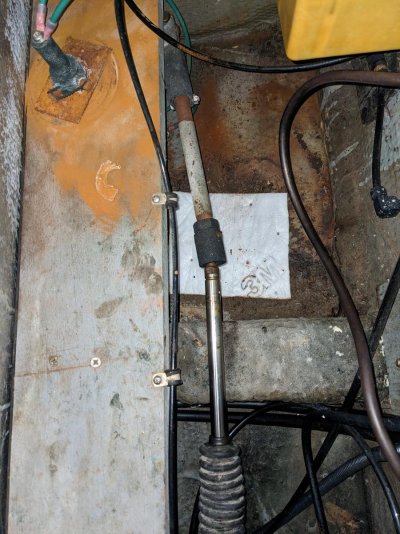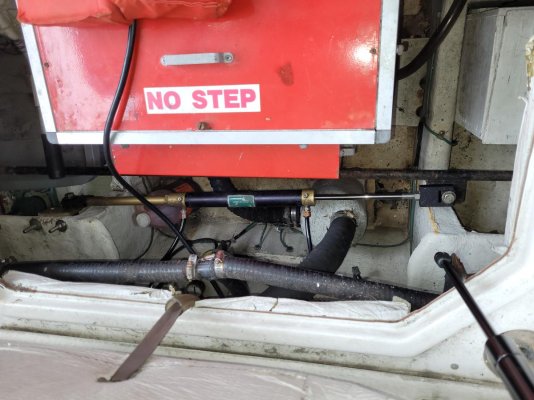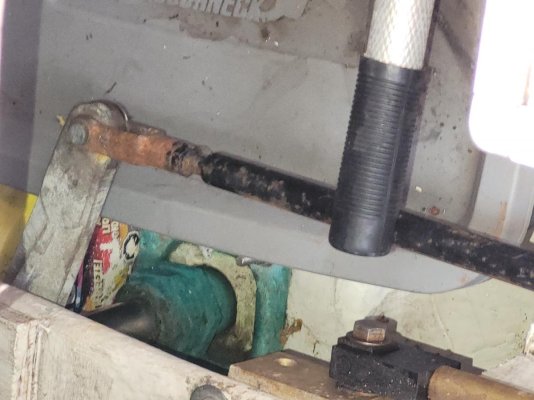rslifkin
Guru
- Joined
- Aug 20, 2019
- Messages
- 7,584
- Location
- USA
- Vessel Name
- Hour Glass
- Vessel Make
- Chris Craft 381 Catalina
I've always heard the prevailing wisdom that planing hulls typically have a 70* rudder sweep (35* in either direction). And that with twin rudders you typically want some Ackerman in the steering geometry so the rudder towards the inside of a turn streers to a higher angle than the rudder on the outside of the turn.
I was doing some work on my steering today and decided to check how far my rudders actually swing. Despite my boat being a planing hull (top speed around 25 kts, fast cruise at 17-18), I have over 90 degrees of rudder swing. And oddly, it has some reverse Ackerman. The rudder to the inside of a turn gets to 45 degrees, the outside rudder gets to about 50 degrees at full travel.
This certainly explains why this boat turns so tightly, but I'm a bit confused by the reverse Ackerman. It also explains why 5 turns lock to lock doesn't feel slow.
What's the group's thoughts on such high rudder angles on a faster boat and especially the reverse Ackerman?
I was doing some work on my steering today and decided to check how far my rudders actually swing. Despite my boat being a planing hull (top speed around 25 kts, fast cruise at 17-18), I have over 90 degrees of rudder swing. And oddly, it has some reverse Ackerman. The rudder to the inside of a turn gets to 45 degrees, the outside rudder gets to about 50 degrees at full travel.
This certainly explains why this boat turns so tightly, but I'm a bit confused by the reverse Ackerman. It also explains why 5 turns lock to lock doesn't feel slow.
What's the group's thoughts on such high rudder angles on a faster boat and especially the reverse Ackerman?



